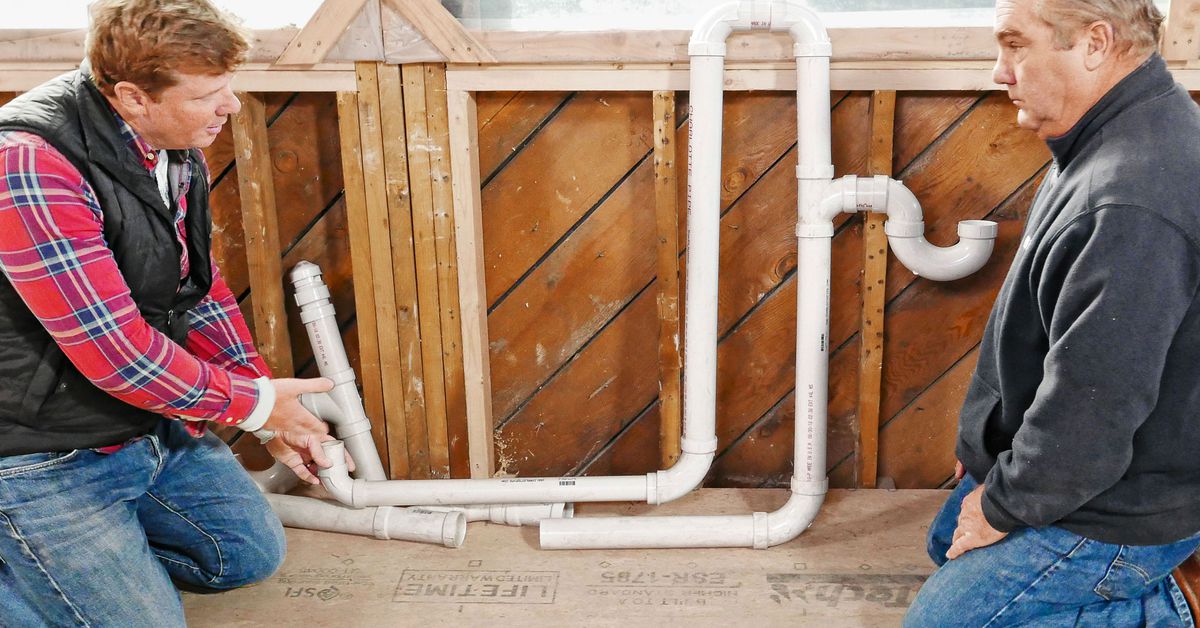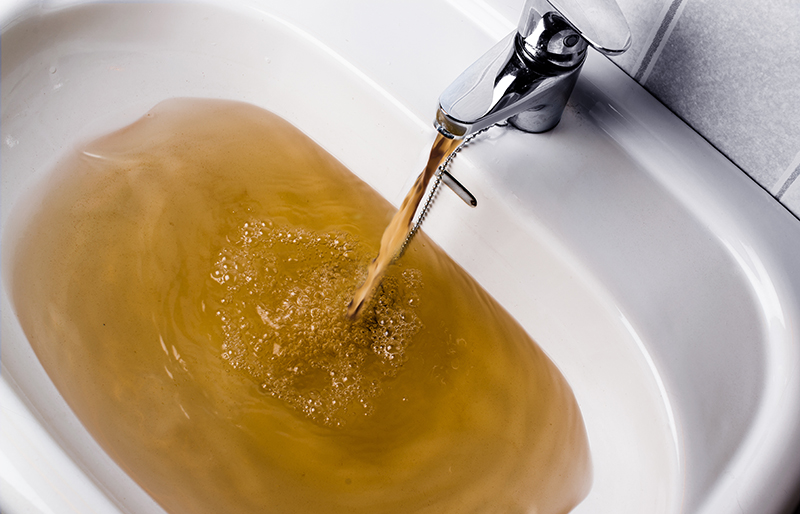The Ultimate Guide To Resolving Plumbing Noises
The Ultimate Guide To Resolving Plumbing Noises
Blog Article
Have you been searching for suggestions about Diagnose Unwanted Plumbing Noises?

To identify noisy plumbing, it is necessary to identify initial whether the undesirable sounds take place on the system's inlet side-in other words, when water is turned on-or on the drainpipe side. Sounds on the inlet side have varied reasons: too much water pressure, worn shutoff and also tap components, improperly connected pumps or other home appliances, incorrectly placed pipe fasteners, as well as plumbing runs consisting of too many tight bends or other constraints. Sounds on the drain side typically stem from inadequate place or, as with some inlet side sound, a design containing limited bends.
Hissing
Hissing noise that takes place when a faucet is opened a little normally signals excessive water stress. Consult your local public utility if you suspect this issue; it will certainly be able to inform you the water pressure in your location and also can install a pressurereducing shutoff on the inbound supply of water pipeline if necessary.
Thudding
Thudding sound, commonly accompanied by trembling pipelines, when a faucet or appliance shutoff is turned off is a problem called water hammer. The noise as well as vibration are triggered by the reverberating wave of pressure in the water, which suddenly has no area to go. In some cases opening up a shutoff that releases water rapidly right into a section of piping containing a limitation, arm joint, or tee installation can produce the exact same problem.
Water hammer can generally be cured by setting up fittings called air chambers or shock absorbers in the plumbing to which the trouble valves or taps are connected. These gadgets enable the shock wave produced by the halted circulation of water to dissipate airborne they consist of, which (unlike water) is compressible.
Older plumbing systems might have short vertical sections of capped pipe behind wall surfaces on tap competes the exact same function; these can eventually fill with water, reducing or damaging their performance. The remedy is to drain the water system entirely by turning off the main water supply shutoff and opening up all faucets. After that open the main supply shutoff as well as close the taps one by one, starting with the tap nearest the valve and also ending with the one farthest away.
Chattering or Shrilling
Intense chattering or shrieking that occurs when a shutoff or tap is switched on, and that typically goes away when the fitting is opened totally, signals loosened or faulty inner components. The remedy is to change the valve or faucet with a brand-new one.
Pumps as well as home appliances such as washing equipments and also dishwashing machines can transfer electric motor noise to pipes if they are poorly connected. Connect such products to plumbing with plastic or rubber hoses-never rigid pipe-to isolate them.
Various Other Inlet Side Noises
Creaking, squealing, scratching, breaking, and tapping normally are triggered by the growth or contraction of pipes, generally copper ones providing warm water. The noises occur as the pipes slide against loose bolts or strike neighboring residence framework. You can usually determine the area of the issue if the pipes are exposed; simply adhere to the noise when the pipes are making noise. More than likely you will certainly find a loose pipeline hanger or an area where pipes exist so near to floor joists or various other framing pieces that they clatter versus them. Attaching foam pipe insulation around the pipes at the point of contact ought to treat the trouble. Make sure bands and hangers are secure and also supply sufficient assistance. Where possible, pipe fasteners must be affixed to huge structural aspects such as structure wall surfaces as opposed to to mounting; doing so decreases the transmission of resonances from plumbing to surface areas that can intensify and also move them. If affixing bolts to framework is inescapable, cover pipelines with insulation or various other resilient material where they get in touch with fasteners, as well as sandwich completions of brand-new bolts in between rubber washing machines when mounting them.
Remedying plumbing runs that suffer from flow-restricting limited or countless bends is a last resort that should be carried out only after speaking with an experienced plumbing specialist. Sadly, this circumstance is rather common in older houses that may not have been developed with indoor plumbing or that have seen numerous remodels, specifically by beginners.
Drain Noise
On the drainpipe side of plumbing, the chief objectives are to eliminate surface areas that can be struck by dropping or hurrying water and to insulate pipelines to contain inescapable sounds.
In new building, bath tubs, shower stalls, bathrooms, as well as wallmounted sinks and containers ought to be set on or versus resilient underlayments to minimize the transmission of sound with them. Water-saving commodes and faucets are much less loud than traditional versions; mount them instead of older types even if codes in your location still allow making use of older fixtures.
Drainpipes that do not run vertically to the basement or that branch right into horizontal pipe runs supported at flooring joists or other mounting existing specifically troublesome sound issues. Such pipes are huge sufficient to emit considerable resonance; they likewise lug considerable amounts of water, that makes the situation even worse. In new building, specify cast-iron soil pipelines (the large pipes that drain pipes toilets) if you can manage them. Their enormity includes a lot of the sound made by water travelling through them. Additionally, prevent routing drains in walls shown to bed rooms and areas where people collect. Walls containing drains ought to be soundproofed as was defined earlier, making use of double panels of sound-insulating fiber board and wallboard. Pipelines themselves can be covered with special fiberglass insulation created the purpose; such pipelines have a resistant vinyl skin (occasionally containing lead). Results are not always adequate.
If Your Plumbing is Making These Sounds, There’s a Problem
A Bang or Thump When You Turn Off a Faucet
If a loud bang or thump greets you each time your turn off running water, you likely have a water hammer. A water hammer occurs when the water velocity is brought to a halt, sending a shock wave through the pipe. It can be pretty jarring — even worse, damaging to your plumbing system. All that thudding could loosen connections.
Strange Toilet Noises
You’re so familiar with the sounds your toilet makes that your ears will be attuned to anything out of the ordinary. Fortunately, most unusual toilet noises can be narrowed down to just one of several problems.
Foghorn sound:
Open the toilet tank Flush the toilet When you hear the foghorn noise, lift the float to the top of the tank If you’re ambitious, you can remove the ballcock valve and disassemble it to replace the washer. Or you can more easily replace the ballcock valve entirely. This device is relatively inexpensive and available at most any hardware store.
Persistent hissing:
The hissing following a flush is the sound of the tank filling. It should stop once the tank is full. But if the hissing continues, it’s likely because water is leaking out of the tank. The rubber flap at the bottom of the tank can degrade, letting water slip through and into the bowl. That’s why the tank is refilling continuously. Fortunately, this is an easy fix:
Cut the water to the toilet by closing the shutoff valve on the water supply line. Flush the toilet to drain the tank. Disconnect the flapper Attach the new flapper Gurgling or bubbling:
Gurgling or bubbling suggests negative air pressure in the drain line, likely resulting from a clog. As air releases, it causes the water in the toilet to bubble. This could either be a minor issue or a major one, depending on the clog’s severity. Clogs can be caused by toilet paper or more stubborn obstructions such as tree roots. If you can’t work out the clog with a plunger, contact a professional plumber for assistance because a clog of this magnitude could lead to filthy and unsanitary sewage backups in your sink bathtub.

I recently found that blog post about Why Do My Plumbing Pipes Make A Knocking Noise while doing a search on the internet. Those who liked our blog post if you please be sure to pass it around. We truly appreciate reading our article about Why Do My Plumbing Pipes Make A Knocking Noise.
Avoid further plumbing damage; call. Report this page